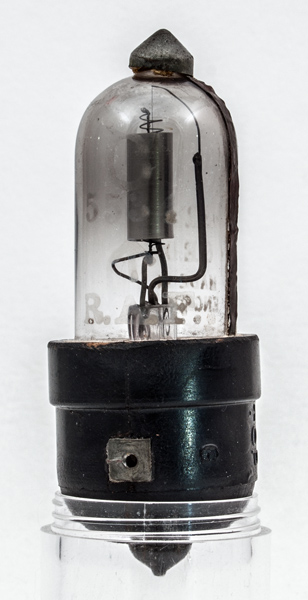
|
The RAF Type C was developed at the end of WWI, it is a hard vacuum triode designed for RF or AF amplification and is fitted to an Inter-services type 1 base I/S1. The box gives both the date, 1918, and the serial number of 5534. In the same style of envelope and base and made at the same time was the RAF Type D, a soft valve used at a detector in equipment that used the Type C as amplifiers.The filament is a straight tungsten wire. The top connection to the filament is by a spring attached to a support sealed into the pinch. The wire passes through the pinch to the base and thence via an external metal strip to the top contact. The lower end of the filament connects to the other end contact. The grid and anode are brought out to side contacts.The RAF Type C went into production in September 1918. This type of valve was made by GEC and Edison Swan. This exhibit is of GEC manufacture at the Osram lamp works.The main picture shows the large C etched into the glass with a serial number below and the letters RAF below that. On the base can be seen the letter G by the side contact.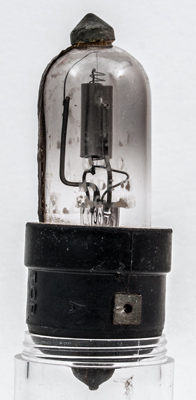
This side of the glass has the etched wording: Osram, GEC and Made in England.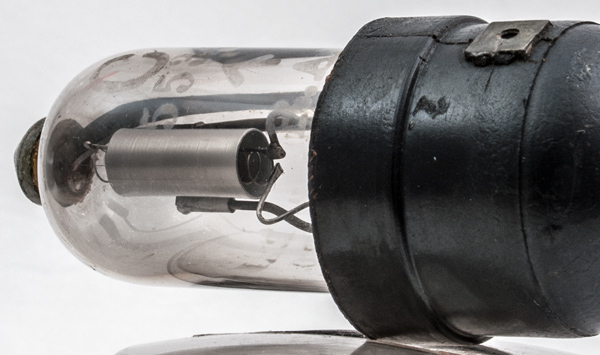
The cylindrical anode is mounted vertically. The helical grid is held to the single support rod by a fine wire wrapped around both.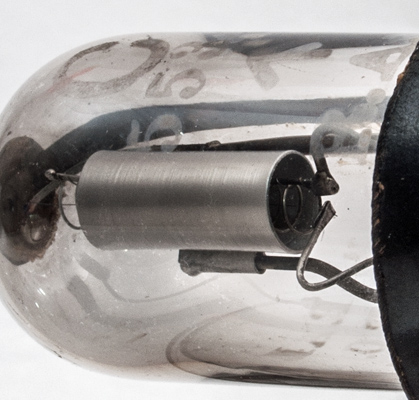
A closer view.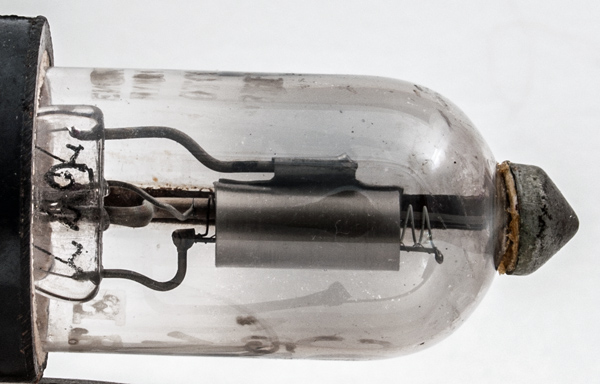
Here the grid, grid support and tie-in wire can clearly be seen.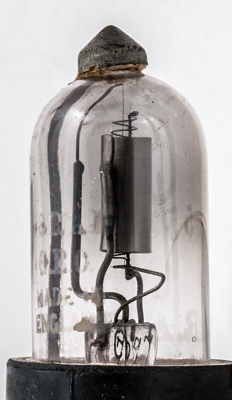
In this image the lettering on the makers side is easier to see.The wide glass tube envelope is 26 mm in diameter, and including the base pins is 85 mm tall.References: 1003 & 1047. Type C was first introduced in 1918. See also 1918 adverts. |
Absolute Maximum Operating Conditions¶
| Vh | Ah | Va | Vg | mAa | ra | μ | 
| 3.0 | 0.75 | 50-70 | - | - | 16,000-30,000 | 6 |
|
Updated December06, 2018.
|
|